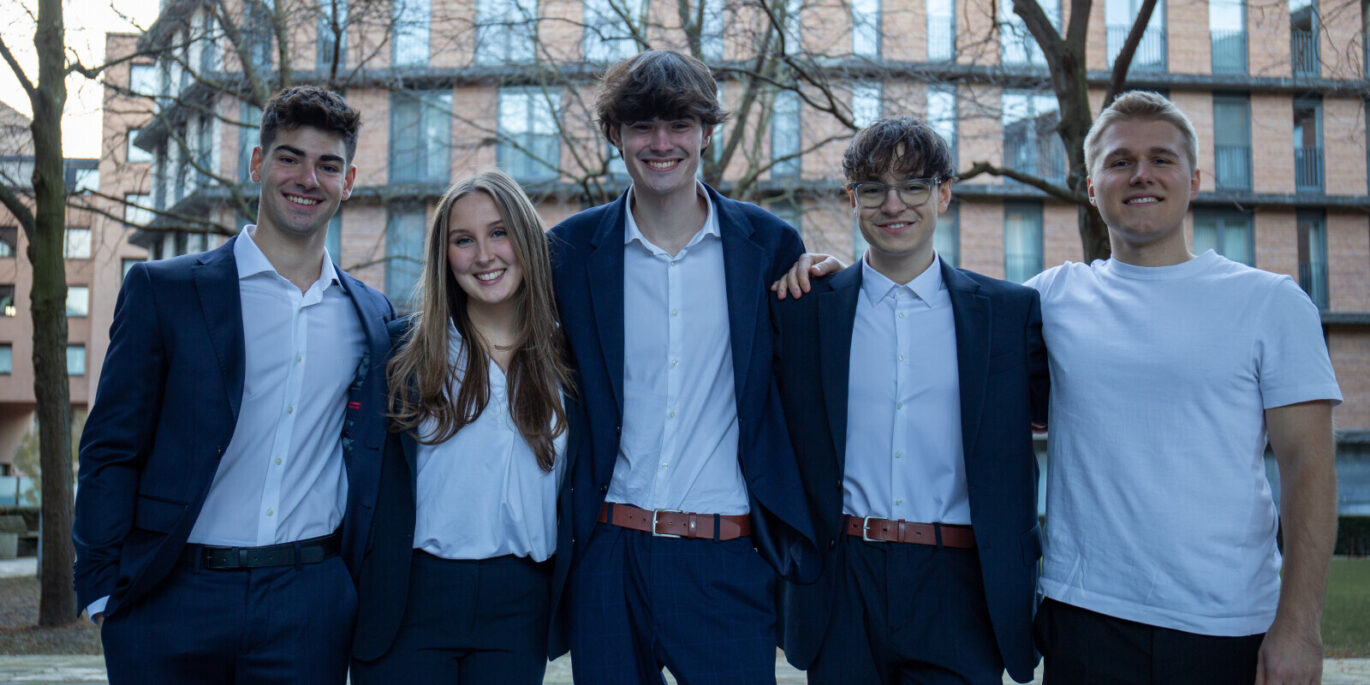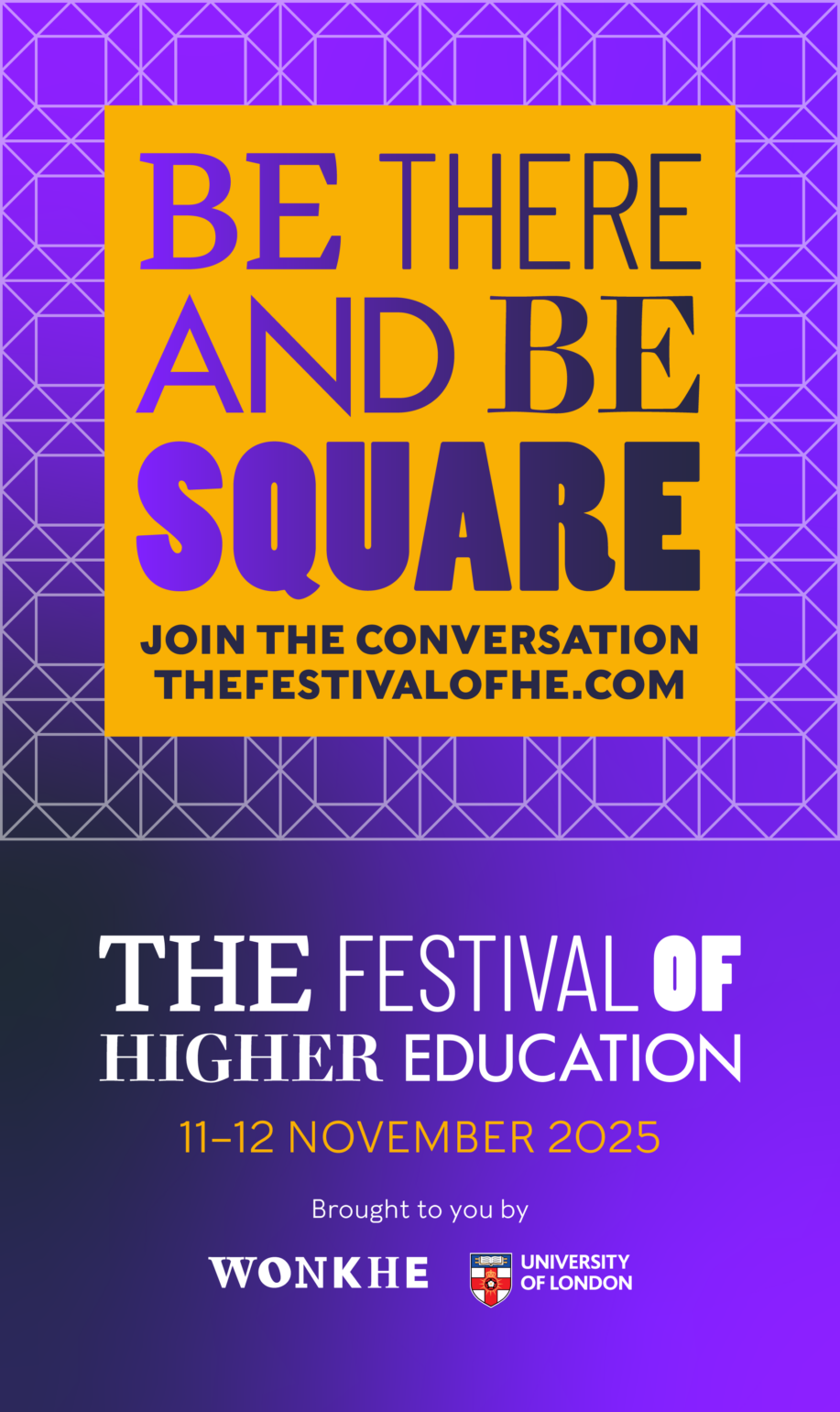Celtic Connections 2025 is a collaborative conference bringing together staff from SUs across Scotland and Ireland to tackle shared challenges and innovate for the future of student life.
This event is valuable because it creates a vital cross-border platform for knowledge sharing and strategic thinking within the student movement. At a time when higher and further education face significant pressures, the conference addresses critical issues and encourages active participation through question submissions, ensuring attendee voices shape the discussions.
Beyond the formal agenda, the conference facilitates crucial networking opportunities through catered meals and an evening reception, allowing professionals to build relationships that can lead to ongoing collaboration and support.
Making partnership work
Kicking off the event, Strathclyde’s incoming Principal & Vice-Chancellor Stephen McArthur talked effusively about the university/SU Strategic Alliance Framework. This is a collaborative agreement that represents a genuine partnership approach to university governance and student experience.
Rather than the university simply dictating policies or the student union operating in isolation, this framework establishes shared goals and joint accountability between the two organizations.
The alliance focuses on four key themes: Wellbeing (including tackling student hunger and improving support systems), Inclusion, Diversity, Equality, and Accessibility (empowering diverse student leadership and improving campus accessibility), Sustainability (including ethical investment policies and environmental education), and Student Community (creating buddy systems and entrepreneurship opportunities).
The framework is built on aligned values between both organisations – while they use different language, both prioritise excellence, collaboration, and supporting their community.
It includes specific, measurable deliverables like establishing a Strath Pantry for food security, implementing flexible fee payment options, creating sustainable buddy systems for first-year students, and developing ethical investment policies. This represents a mature, strategic approach to student-university relations that goes beyond traditional consultation to genuine co-creation of the student experience.
A new vision
Session One from Wonkhe’s Jim Dickinson (speech, slides) opened with a provocative challenge – SU are often “passionate in private but silent in public.” His keynote addressed a fundamental contradiction in how SUs operate – doing sterling behind-the-scenes work while failing to communicate their vision and values to the students they serve.
Dickinson painted a stark picture of SU communications that can sometimes prioritise events over advocacy. While courses face closure and students struggle financially, union websites showcase summer ball tribute acts rather than the fights being waged on students’ behalf. This disconnect leaves students unaware of what their unions actually stand for or accomplish.
“When students need their union the most,” Dickinson observed, “their union looks more interested in itself than its members.” The result is that students know they can get involved and seek help, but have no idea what their SU thinks about teaching, housing, or health – the issues that define their daily experience.
Drawing parallels with political campaigning, Dickinson highlighted how effective advocacy focuses on voters’ lived experiences rather than institutional structures. The Brexit campaign succeeded by addressing NHS access and immigration concerns, while Remain campaigned about the EU itself. SUs, he argued, make the same mistake – talking about themselves rather than students’ real conditions.
The research is clear – citizens respond to representatives who demonstrate understanding of their challenges and present concrete agendas for improvement. SUs need to move beyond celebrating their own processes to articulating a powerful vision for student life.
The full-time fiction
Dickinson challenged fundamental assumptions about the student lifecycle, arguing that traditional models assume a neat progression from school through university to career and homeownership. Today’s reality involves what researchers term an “extended middle stage” characterized by identity exploration, instability, self-focus, feeling in-between, and optimism about the future.
This shift means university serves as vital scaffolding during a crucial developmental period, not just academic preparation. The markers of adulthood – marriage, parenthood, home ownership – happen much later for graduates, making the university experience more important for personal growth and community building than ever before.
Rather than unbundling education into cheaper, faster components, Dickinson argued for richer, more meaningful experiences that serve this extended transition period. British students enter university earlier and graduate faster than most OECD countries, with little flexibility for life events, health issues, or financial pressures – contributing to some of Europe’s worst student mental health statistics.
A central theme centered on the fundamental contradiction of “full-time” study in modern higher education. While universities maintain structures designed for students with abundant free time, the reality is starkly different. Most students work during term time just to survive, with the poorest facing impossible financial mathematics.
The maximum maintenance loan in England sits at £10,227, while actual living costs approach £19,000 annually. The earnings threshold determining loan amounts has remained frozen at £25,000 since 2008 – if it had kept pace with inflation, it would be about £36,500 today. Meanwhile, families earning what qualified for maximum support in 2008 now face £4,000 annual parental contributions.
For less advantaged students, 71% work beyond the recommended 15-hour weekly limit where academic performance typically suffers, compared to just 27% of more advantaged students. Nearly one in five home students and 27% of international students face hour-long commutes between campus and work, while almost half deal with zero-hours contracts making stable study routines impossible.
The financial reality creates fundamental inequalities in educational experience. Where once work might have been for discretionary spending, students now work to cover rent and food. Universal Credit compounds these pressures – reducing by a full pound for every pound of maintenance loan received, while the monthly disregard for books and equipment has remained frozen at £110 for thirteen years.
Dickinson challenged the sector to abandon outdated assumptions about student availability and design educational structures around students’ economic realities. Block teaching emerged as one promising alternative, concentrating learning into focused periods that reduce commuting costs and allow more predictable work scheduling around study.
Transition
Drawing from his own university experience, Dickinson illustrated how hidden cultural advantages still determine student success despite decades of widening participation efforts. While all students receive the same induction and read identical budgeting guides, some arrive with maps while others must navigate blindly.
His personal anecdote – arriving at university only to realise others had gap year experiences building schools while he worked in a Wolverhampton shoe shop – highlighted persistent inequalities. Less than twenty hours after arrival, differences in note-taking skills, field trip preparation, and assignment expectations created deep gaps that shaped entire university experiences.
Universities excel at defining graduate outcomes but provide poor support for newcomers lacking university navigation skills. The “conscious incompetence” stage – when students realize how much they don’t know – leads to dropping out without proper guidance, or worse, hanging on while gaining little from the experience.
Current pre-university efforts overwhelm students with information rather than building skills systematically. Summer schools and early arrival programs treat orientation as events rather than processes, while 40% of students report feeling like impostors in higher education.
Dickinson advocated for credit-bearing transition programs covering academic community rights and responsibilities, university-level learning approaches, cultural awareness, and independent living skills. These should be student-supported and partly assessed, transforming transition from a hidden test of cultural capital into a clear pathway accessible to everyone.
Work and AI
Rather than treating student employment as separate from education, Dickinson called for coherent strategies recognising work as inevitable in mass higher education systems. Every review of student finance – Diamond in Wales, Cubie in Scotland, Augar in England – acknowledges students will work 10-15 hours weekly, yet none address the practical implications.
European examples demonstrate better integration: Slovenia’s student-led employment agencies match students with suitable work, Germany provides special contracts with legal protections, France offers reduced tax arrangements, and Belgium runs integrated study-work programs balancing both needs.
The rise of AI adds urgency to rethinking educational priorities. When technology can produce essays indistinguishable from student work, traditional assessment becomes problematic. Rather than fighting this development, universities should refocus on uniquely human capacities – ethical judgment, interpersonal connection, and contextual understanding that technology supports but cannot replace.
This means emphasising interdisciplinary work, applied projects, problem-oriented learning, and human communication both inside classrooms and across extracurricular activities. The outdated degree classification system should be scrapped in favour of qualifications highlighting individual graduate capabilities rather than mythical pecking orders.
The keynote drew sharp contrasts between UK student representation and European models. While British universities drag students to numerous committee meetings where they provide feedback without decision-making power, Finnish universities embed fewer representatives in bodies with real governance authority.
Helsinki University operates with about 300 student representatives for 30,000 students – fewer than typical UK course rep systems but with genuine power to shape priorities and resources. Student reps are banned from just gathering feedback; their job is interpreting data to make strategic decisions about programs and services.
European systems organise representation around institutional structures rather than central training. Where UK universities might have 20 course reps plus an academic society in one department, European institutions feature single, powerful associations building both belonging and agency.
This distinction reflects deeper philosophical differences about student citizenship versus customer satisfaction. Do we see students as customers whose satisfaction we track, or as citizens with rights and responsibilities to help govern their institutions? The answer affects everything from representatives’ sense of impact to students’ actual influence on university decisions.
Dickinson advocated for representation reform moving students from feedback collectors to decision-makers, backed by clear legal rights and institutional ombudspeople who can rapidly resolve disputes rather than current systems where complaints can take twelve weeks just to be opened.
Communities
A potential vision extends beyond campus boundaries to encompass student integration within wider urban communities. Dickinson criticised the tendency to warehouse students in purpose-built accommodation lacking social spaces, while city planning ignores their substantial presence in local populations.
His observations from Plymouth illustrated typical problems: converted office blocks and retail spaces house growing international student populations, but lack communal areas for students to meet, socialise, or build relationships. City centre regeneration plans mention universities in economic contexts but ignore students in community development strategies.
Student health emerged as a critical concern requiring systematic attention rather than ad hoc responses. Beyond general mental health discussions, students face specific issues directly impacting learning: rising STI rates with gonorrhea diagnoses at record levels, increasing substance use problems, disordered eating exacerbated by financial stress, chronic sleep deprivation affecting cognitive function, dangerous limitations in dental care access, and nutritional gaps impacting immunity and bone health.
Finland’s Student Health Service provides comprehensive healthcare while collecting valuable data through national surveys, enabling evidence-based interventions. The UK’s fragmented approach across multiple agencies and levels of government creates confusion about standards and responsibilities, while eight-year ADHD assessment backlogs force students with financial resources toward private diagnosis while others remain trapped in endless waiting periods.
Rights and citizenship
Rather than positioning improvements as institutional favours, Dickinson framed his agenda around student entitlements. This rights-based approach moves beyond both paternalistic and consumerist models toward genuine citizenship balancing independence with support.
The UK and Ireland have among the weakest baseline student rights in Europe, lacking the comprehensive legal frameworks found elsewhere. Students should reasonably expect structured guidance ensuring cultural capital doesn’t determine success, meaningful opportunities for community contribution, assessment reflecting real skills rather than easily gamed outputs, financial support matching actual living costs, and representation in governance structures where real decisions occur.
Additional rights include fair employment with clear expectations and skill development, education designed for students’ actual time constraints, active consideration by all government departments beyond education, legal protection through clear institutional responsibility frameworks, rapid dispute resolution, and affordable housing near campus.
Perhaps most innovatively, Dickinson proposed formal academic credit for student contributions to their communities – 10 ECTS credits annually for undergraduates, 15 for postgraduate taught students, engaged in mentoring, society leadership, or local partnerships. This legitimises time spent beyond coursework while developing crucial collaborative skills, creating sustainable alternatives to expensive professional services.
The proposal for credit-bearing community contribution addresses multiple challenges simultaneously. When students mentor first-years through university transition, they develop teaching and leadership skills while reducing newcomer isolation. Cultural societies connecting international students with local communities build intercultural competence while strengthening university-civic relationships. Case competitions and applied projects solving local business problems provide practical experience while creating tangible community value.
This approach becomes essential as universities face financial constraints requiring reduced support services. Rather than simply cutting provision and damaging student experience, formal recognition of student contributions creates mutually beneficial systems where peer programs deliver superior outcomes because students connect with each other in ways staff sometimes cannot.
The model shifts focus from what universities might offer toward what students should expect to enable educational and social success. It recognises that educational outcomes are delivered in partnership from classroom to boardroom, requiring representation where actual decisions happen with authority to shape outcomes rather than just commenting on them.
Old newsreels showing students in fundraising parades mixing fun with community contribution illustrate historical precedents for civic engagement. Today’s negative portrayal focusing on noise complaints and disruption ignores students’ actual contributions, including significant sacrifices during COVID to protect vulnerable populations often at personal educational and wellbeing costs.
The implementation challenge
Dickinson’s closing challenge was direct: every SU should develop a “proper, powerful, long-term vision for the student experience” that goes beyond event programming to address fundamental questions about learning, work, health, and civic participation.
This vision must recognise students as citizens with both rights and responsibilities, moving beyond paternalistic or consumerist models toward genuine partnership. It requires tackling root causes of student disengagement and distress rather than merely treating symptoms through reactive support services.
The Bath SU’s aspiration to deliver “the best student experience in the world” exemplified this approach – not for competitive reasons but to positively challenge their institution as true partners. Such visions should encompass all aspects of students’ lives while developing each individual’s potential contribution to wider society.
Dickinson emphasised that this agenda extends beyond education itself. When students learn to contribute effectively to their communities, build connections across social divides, and engage with local challenges, they create value far beyond career preparation. When students thrive in integrated systems, everyone benefits – from immediate university communities to wider society gaining engaged, capable citizens.
The vision requires coordinated action from university leaders, policymakers, students, and community partners. Rather than small fixes addressing symptoms, fundamental challenges need systematic solutions: funding and delivery models reflecting actual student needs, educational structures fitting students’ complex lives, and approaches tackling root causes of disengagement rather than just treating consequences.
Celtic Connections 2025 continued with sessions exploring practical implementation of these themes, building on Dickinson’s comprehensive foundation to develop actionable strategies for transformation across Scottish and Irish SUs. The challenge now lies in translating ambitious visions into concrete changes that improve student experiences while strengthening the civic role of higher education in society.


















